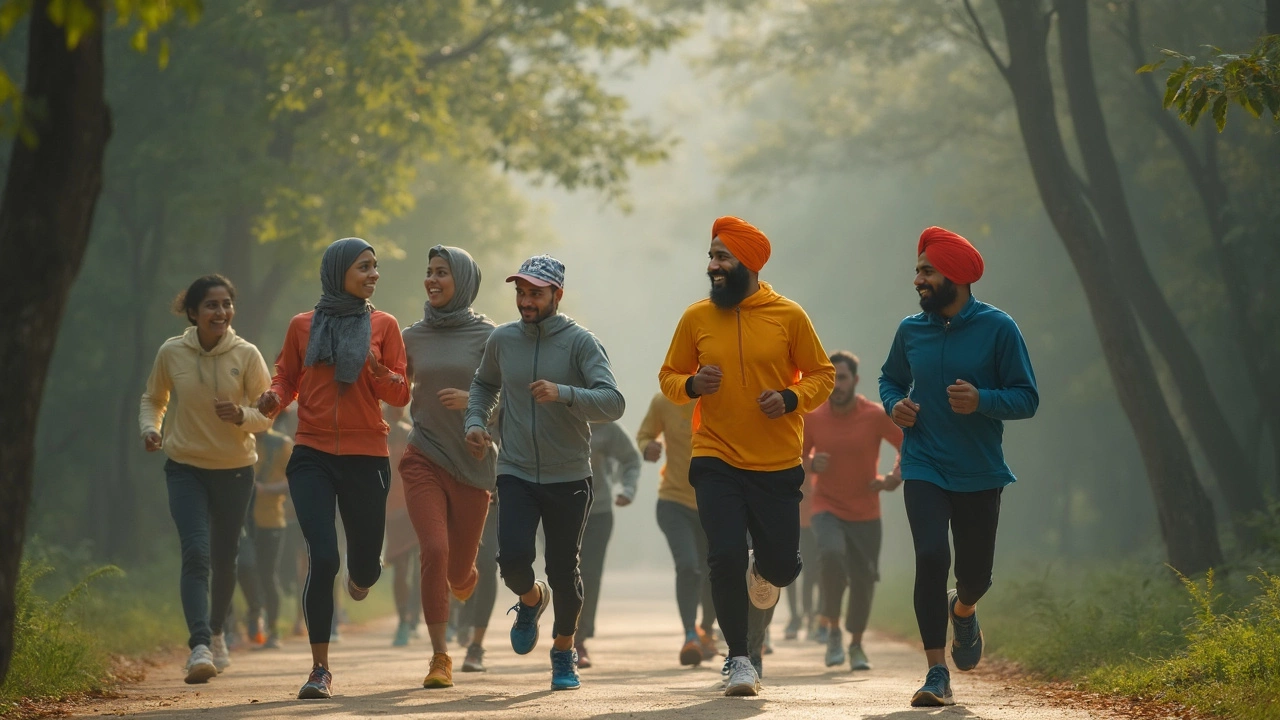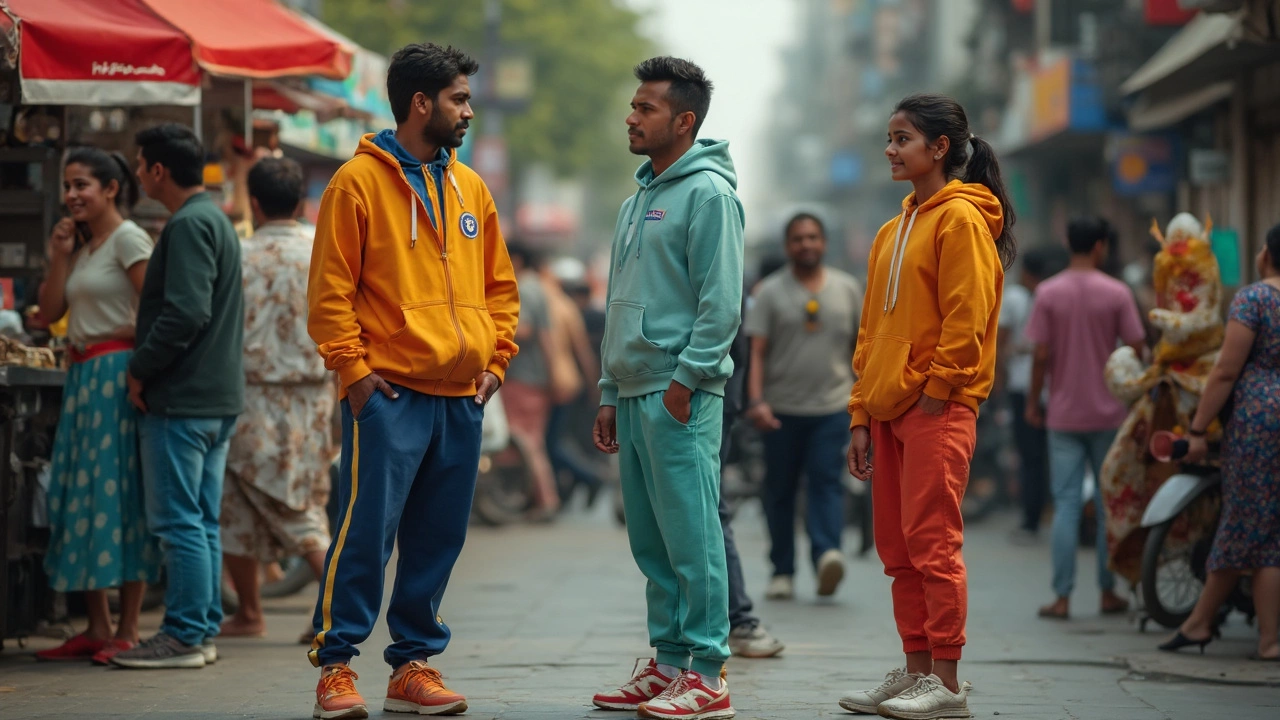Ever noticed how people call anything comfy 'sportswear' these days? It’s actually more than just a nickname for gym clothes. The story behind the word 'sportswear' starts over a century ago, when people first needed something better than stiff suits and skirts for golf or tennis. The name stuck, but what it describes has changed a ton since then. Now, you’re just as likely to see joggers at the coffee shop as at the track.
If you’re picking out clothes to wear for everything from soccer practice to Saturday errands, knowing what counts as sportswear can be seriously helpful. You’ll avoid paying extra for stuff that’s just trendy, not practical. Understanding what makes clothes comfortable, breathable, and able to hold up to movement (and sweat) helps you buy things that won’t just gather dust in a drawer.
- Where Did the Term 'Sportswear' Come From?
- The Shift from Exercise to Everyday
- What Really Counts as Sportswear?
- Finding Sportswear That Works for You
Where Did the Term 'Sportswear' Come From?
The word sportswear popped up in the early 20th century in Britain and the U.S. Back then, people finally wanted to break away from heavy, stiff clothing for activities like tennis, golf, and cycling. The idea was simple—design clothes that actually let folks move, sweat, and still look decent. That’s why you suddenly saw lighter fabrics and looser fits popping up for ‘sporty’ occasions.
By the 1920s and 30s, the term sportswear really started picking up in American department stores. It wasn’t even just for pro athletes—it meant casual, practical outfits you could wear to social events, out on a walk, or while running errands. Designers like Claire McCardell and Coco Chanel got famous for creating clothes women could wear outside the tennis court or golf course. That was a big deal, since fashion before this was all about being formal and uncomfortable no matter what you were doing.
Here’s a quick look at how sportswear started blending into regular wardrobes:
- 1920s: Sweaters and flannel pants hit the mainstream after being spotted at college football games.
- 1930s: Tennis dresses, golf skirts, and knit tops spread from the locker room to weekend wear.
- 1940s-50s: Hoodies and windbreakers go from sidelines to street style.
This move towards clothing that was both functional and good-looking is why the word stuck—people wanted more freedom, and sportswear made it happen. By the late 20th century, it didn’t just mean garments for sports; it meant clothes for pretty much any casual setting.
The Shift from Exercise to Everyday
The whole idea of sportswear once meant clothes made only for getting sweaty—think shorts, tracksuits, and old-school sneakers. That changed big time in the 1970s and 1980s, when brands like Adidas and Nike got huge. These companies weren’t just aiming for athletes. They put their logos on shirts and made those classic tracksuits everyone wanted to wear, whether they were running or just grabbing a bite with friends.
Then came the wave of “athleisure” in the 2010s. Suddenly, stuff built for the gym—yoga pants, hoodies, even athletic-looking hats—became a go-to for daily life. People liked that these clothes felt comfortable and looked laid back, but were still designed to handle movement, sweat, and real activity. You can thank busy work schedules, the rise of remote jobs, and a general “comfort-first” approach for the crossover.
Check out these numbers:
| Year | Estimated Global Sportswear Market Value (USD) |
|---|---|
| 2000 | 80 billion |
| 2015 | 270 billion |
| 2024 | 410 billion |
That jump says it all—the line between athletic clothing and everyday fashion is barely there anymore. And it’s not just about looks. Most modern activewear uses technical fabrics that wick away sweat, stretch, and breathe, making them work for everything from jogging to sitting on an airplane for eight hours.
Here’s a quick way to spot a good piece of modern sportswear you’ll actually wear outside the gym:
- Check the label for features like moisture-wicking or built-in stretch
- Look for fits that aren’t too tight or baggy—think comfort for movement, not just style
- Pick colors or patterns you’d feel good wearing to a coffee shop, not just a workout
So next time you pull on those joggers for a movie night, remember: you’re part of a long trend that made “exercise clothes” just everyday clothes.

What Really Counts as Sportswear?
People use the word sportswear so much, it kind of lost its edge. But, officially, sportswear means clothes designed to help you move, sweat, and stay comfortable—whether you’re working out or just hanging out. Think stretchy, breathable fabrics: stuff that lets your skin breathe and moves with your body. Cotton hoodies, polyester track pants, moisture-wicking tees—if you see those terms on a tag, you're probably looking at real sportswear.
Here’s the thing: not everything labeled 'sportswear' is actually built for sports. Fashion brands slap that word on pretty much anything comfy these days. True sportswear usually has features that solve real problems, like:
- Moisture-wicking: Pulls sweat off your body to keep you dry.
- Stretch: Gives you freedom to bend, reach, or run.
- Breathability: Keeps air flowing so you don’t overheat.
- Durability: Survives washing, stretching, and weather.
- Quick-dry materials: Handy for anything sweaty or outdoors.
Some numbers to keep it real: According to the NPD Group’s 2023 report, 60% of Americans said they wore athletic clothing even when not exercising. Why? Comfort and convenience. The line between athletic gear and everyday style is blurry now, but the starch test is simple—can you break a sweat in it and not regret your wardrobe choices?
Still not sure what makes something true sportswear? Check the pockets! Real sportswear often has zippered pockets or headphone loops—stuff that’s actually useful if you’re out on a run. If it only looks sporty but can’t handle a workout, call it athleisure, not the real deal.
Finding Sportswear That Works for You
Picking the right sportswear isn’t just about grabbing the softest hoodie on the rack. It’s about comfort, good fit, and clothes that really move with you, whether you’re actually heading for a run or just running errands.
Start with fabric. Most athletic clothing today uses techy materials like polyester blends, nylon, or spandex, because they wick away sweat and dry faster than cotton. The big brands like Nike, Adidas, and Lululemon aren’t just putting shiny logos on these pieces. They’ve put years of work into materials that keep you cool and don’t chafe. According to a 2024 report by the Sports & Fitness Industry Association, over 65% of buyers said sweat-wicking and quick-drying features matter most to them when shopping for activewear.
Here’s a quick breakdown of what to look for when picking sportswear for your lifestyle:
- Fit: Not too tight, but not baggy either. Look for a little stretch so you can actually move. Try things on and do a squat or two—if you can’t move, skip it.
- Breathability: Mesh panels or moisture-wicking materials keep sweat from turning your workout into a sauna session.
- Durability: Check if the seams feel strong and the fabric bounces back after a stretch. Cheap sportswear pills and sags fast.
- Function over hype: Sure, bright colors and bold logos are fun. But things like pockets you’ll actually use? Way better.
- Weather-appropriate: Don’t grab thin shorts for winter jogs. Layer with windbreakers or thermal tops if you’re headed outside in the cold.
And don’t get tricked by the price tag. Higher prices don’t always mean better quality. Sometimes you’re just paying for the name.
Here’s a quick example of some features and price differences you might see:
| Brand | Material | Main Feature | Typical Price |
|---|---|---|---|
| Nike Dri-FIT | Polyester blend | Sweat-wicking | $35–$60 |
| Hanes Cool DRI | Polyester | Quick-drying | $10–$18 |
| Lululemon Metal Vent Tech | Nylon blend | Breathability/polished fit | $70–$90 |
Maxine Bedat, author of "Unraveled: The Life and Death of a Garment," summed it up perfectly:
“Buy what you’ll wear again and again, not just what the ads tell you to want.”
Bottom line: Don’t settle for clothes that look sporty but can’t keep up. Figure out what you’ll actually do in them, and pick sportswear that matches your real life, not someone else’s gym selfie.

